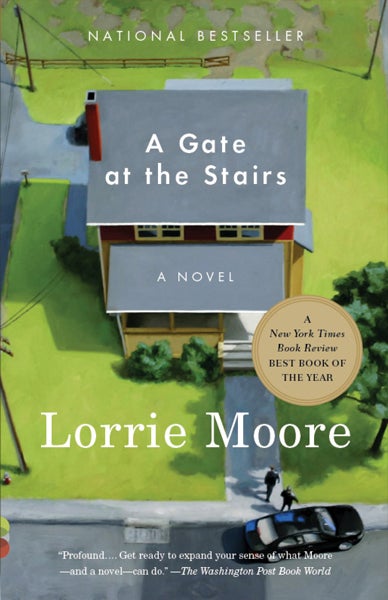Praise for A Gate at the Stairs“Profound.... Get ready to expand your sense of what Moore—and a novel—can do.” —The Washington Post Book World “An indelible portrait of a young woman coming of age in the Midwest in the year after 9/11…. Moore has written her most powerful book yet.” —The New York Times “A miracle of lyric force, beautiful and beautifully constructed, with a comic touch that transforms itself to a kind of harrowing precision.” —O, The Oprah Magazine Click here to read more praise. Reading Group Guide1. In addition to her sense of humor and intelligence, what are Tassie's strengths as a narrator? How does what she describes as “an unseemly collection of jostling former selves” (p. 63) affect the narrative and contribute to the appeal of her tale? 2. In the farming community where Tassie grew up, her father “seemed a vaguely contemptuous character.... His idiosyncrasies appeared to others to go beyond issues of social authenticity and got into questions of God and man and existence” (p. 19). Does the family, either intentionally or inadvertently, perpetuate their standing as outsiders? How does Moore use what ordinarily might be seen as clichés and stereotypes to create believable and sympathetic portraits of both the locals and the Keltjin family? 3. How does the initial meeting between Tassie and Sarah (pp. 10-24) create a real, if hesitant, connection between them? What aspects of their personalities come out in their conversation? To what extent are their impressions of each other influenced by their personal needs, both practical and psychological? 4. Are Sarah's ill-chosen comments at the meetings with Amber (p. 32) and Bonnie (pp. 89-90, p. 93) the result of the natural awkwardness between a birth mother and a potential adoptive mother or do they reveal deeper insecurities in Sarah? Does the adoption process inevitably involve a certain amount of willful deception, unenforceable promises (p. 87), and a “ceremony of approval . . . [that is] as with all charades. . . . wanly ebullient, necessary, and thin” (p. 95)? Click here for the full reading group guide. |










